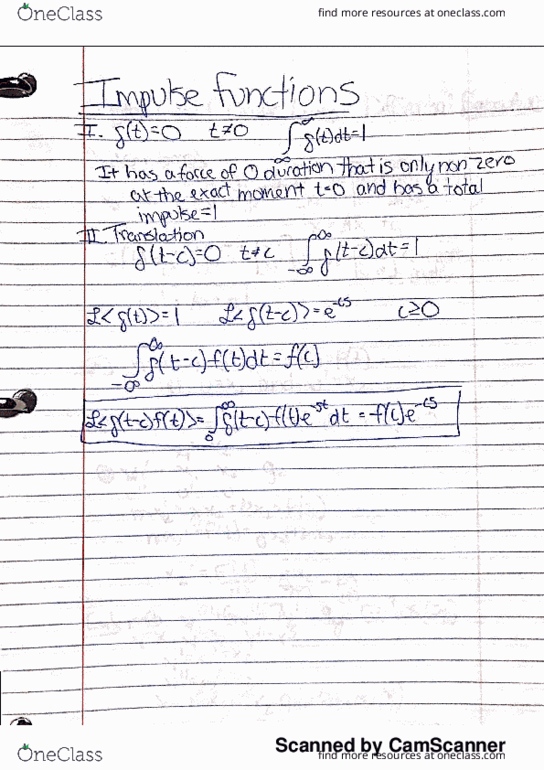
What does it say? How to find the largest interval (that is, the interval of validity) on which a particular solution is guaranteed to exist uniquely? Ex. 3.3.2 y″ + y′ − 12y = 0, y(45000) = 0, y′(45000) = 2© 2011 Zachary S Tseng 4 The Existence and Uniqueness Theorem (for second order linear equations) It is really the same theorem as the one we saw earlier, except this one is in the context of second order linear equation. Find its solution satisfying (a) y(0) = 0, y′(0) = 2 (b) y(0) = 2, y′(0) = −6 How to (easily) work with initial conditions where t0 ≠ 0? Ex. 3.3.1 Take the previous example y″ + y′ − 12y = 0. Therefore, an IVP will have 2 initial conditions in order to give 2 (algebraic) equations needed to solve for them. Initial Value Problems What do the initial conditions of a second order differential equation look like? A second order equation’s general solution will have 2 arbitrary constants / coefficients. 3.2.1 y″ + y′ − 12y = 0 What is its characteristic equation? What are the roots of the characteristic equation? Based on the roots, what are 2 particular solutions of the equation? The general solution is y = Ex. Suppose r1 and r2 are two distinct real roots of the characteristic equation, what is the general solution of the differential equation? y = Ex. Consequently, an important formula to remember for this class is (surprisingly) the quadratic formula: aacbbr242−±−= Note that the characteristic equation method does not require the given differential equation to be put into its standard form first – the quadratic formula simply doesn’t care whether or not the leading coefficient is 1. Therefore, y = ert will be a particular solution for each root r. The characteristic equation Given the equation ay″ + by′ + cy = 0, a ≠ 0, what is its characteristic equation? Any root, r, of the characteristic equation has the property that y = ert always satisfies the equation above.

All equations of this type can be solved by changing it into a first order equation with the substitutions u = y′ and u′ = y″, then use the integrating factor method to solve for u, and integrate the result to find y.© 2011 Zachary S Tseng 2 2. It is essentially a first order linear equation in disguise. 3.1.1 Can you think of any function(s) that satisfy each equation (w/ constant coefficients) below? (a) y″ − 25y = 0 (b) y″ + 25y = 0 (c) y″ − 25 y′ = 0 The example (c) above is an instance of a second order linear equation with the y-term missing. What is the general form of a second order linear equation with constant coefficients? Ex. Second order linear differential equation Standard form: What makes it homogeneous? We will, for the most part, work with equations with constant coefficients only.

© 2011 Zachary S Tseng 1 MATH 251 Work sheet / Things to know Chapter 3 1.


 0 kommentar(er)
0 kommentar(er)
